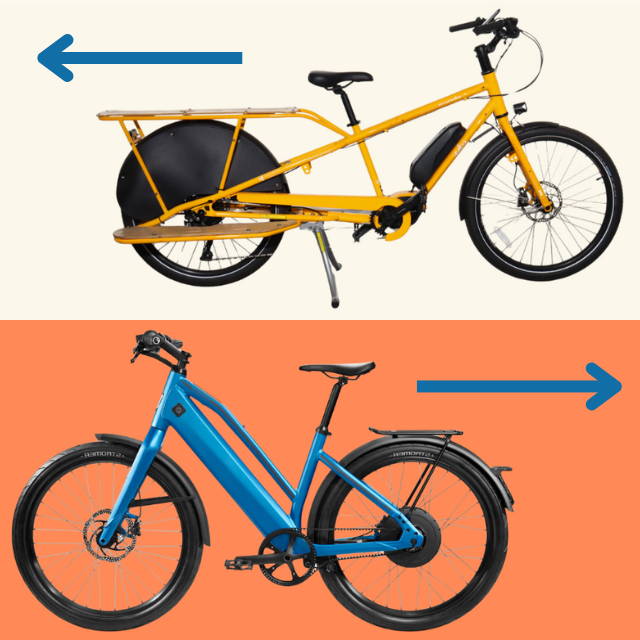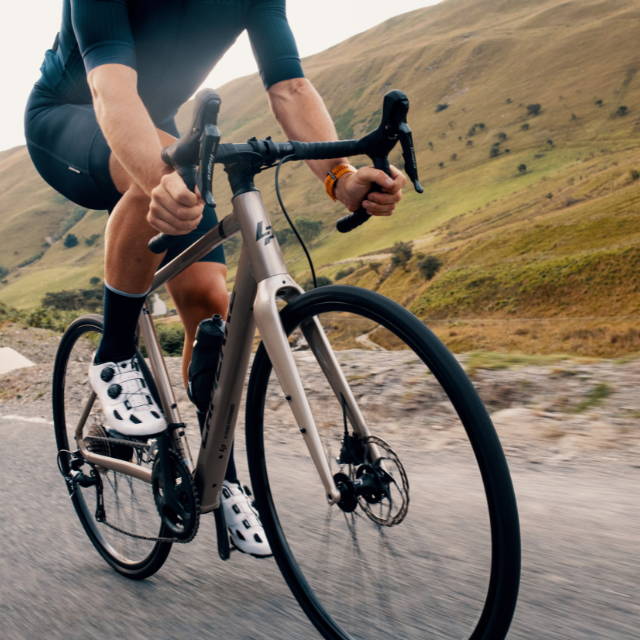Electric bikes have a motor and battery to assist the rider. Riders can choose how much power the motor delivers to the pedals or the hub via a controller on the handlebars.
How Tire Type Affects E-Bike Range & Performance
Written by: Rémy Rossi | February 6, 2025 | Time to read 5 min
You may be robbing yourself of extra watts and range by running the wrong set of tires. Learn about the impact of tire choice on e-Bike performance.

More about the Author: Remy Rossi
Rémy Rossi is a bike writer, mechanic, and educator who got his start in community-based bike shops and co-ops. With a decade in the industry, he still wrenches on bikes when he can and plays bike polo on a fixie.

👋 Interested about Upway?
Tire choice affects e-Bike range
Professional riders frequently talk about techniques to save watts, referring to optimizing their own pedal power measured in watts. The same approach applies, of course, to electric bikes with watt-rated motors and battery capacity measured in watt-hours!
When talking about tire choice in this article, I am mostly referring to the tread pattern and the rubber compound of a tire. These traits are what separate, for example, a soft and knobby trail tire from a fast-rolling XC tire. Other factors like casing, air volume, width, and tire pressure are also important, but are a deeper discussion for another day.
Tread pattern

Those tall knobs will squish as you ride (providing grip) and will absorb a lot of energy. Smoother tires, however, have less rolling resistance and will ride faster in most conditions. But tire choice is not all about efficiency— you’ll still need enough tire grip, especially if you ride steep and chunky trails.

I’ve seen e-MTB range tests from the Merida brand and the Electric Mountain Bike Network (EMBN) that demonstrate huge gains from using faster-rolling tires. Using a smoother tire can save anywhere from 20% to 30% in battery watt-hours which is quite impressive. Of course, that difference is biggest when comparing very different tires on MTB trails— I’d expect that the potential gains would be less for, say, hybrid or road e-Bikes on paved surfaces.
Rubber compound
A tire’s rubber compound may not be the first thing you think of, but it can have a significant impact on e-Bike range. This is especially noticeable on e-MTBs but can also affect a gravel e-Bike or fat tire electric bike with all-terrain tires. Softer tire compounds deform over the riding surface to achieve more grip and absorb energy during that squishing process. But these traction-boosting properties of “sticky” tires can come at the cost of rolling resistance and e-Bike range.
Other factors: Casing, air volume, tire pressure
It’s worth noting that there’s more to the equation of tire choice and e-Bike range. Tire specifications such as casing thickness, air volume, pressure, and width can all influence rolling resistance and efficiency as well. For a deeper look, I recently published my road bike tire guide.
Control vs. speed
So, what tires should you choose?

For example, many recreational fat tires come with knobby tires which provide plenty of traction, but if you’re only riding on bike paths, you could increase your range with slick tires. I recently purchased tires for my gravel bike that have a smooth center line and heavier tread on the outer edges, meaning I can ride fast on pavement and enjoy traction on gravel roads when it counts (e.g. cornering).
The tires your fast electric bike comes with are probably well-suited to the bike— the brands typically do a good job with this. But for e-MTBers who want to get a few more laps in or commuters with a long ride, changing your tires can help your e-Bike go even further. After all, why not save a few watts when you can?

Frequently Asked Questions
How does an electric bike work?
Key Takeways
- Tire Choice Affects E-Bike Range: Smoother, harder tires reduce rolling resistance and improve battery efficiency, while knobbier tires offer more grip but drain power faster.
- Tread & Rubber Compound Matter: Aggressive treads and soft rubber boost traction but reduce range, while firmer, smoother tires roll faster with less energy loss.
- Balance Speed & Control: Choose the fastest-rolling tires that still provide enough grip and comfort for your riding conditions.


